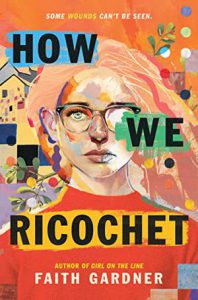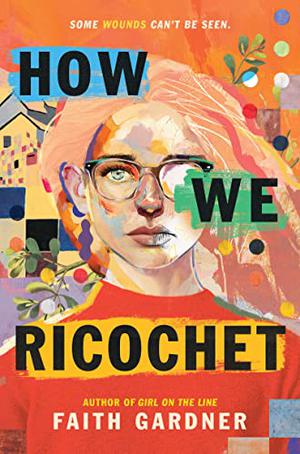 High school graduate Betty Lavelle is easily tormented and doesn’t like to be the center of attention. Generally level-headed and big-hearted, she’s a clothes geek, especially of sixties mod-inspired vintage style. She’s also a worrier who has a tendency to crush on people’s brains. She recently accepted an unpaid internship at Retrofit in order to provide a stepping-stone on her way to a career in the fashion industry.
High school graduate Betty Lavelle is easily tormented and doesn’t like to be the center of attention. Generally level-headed and big-hearted, she’s a clothes geek, especially of sixties mod-inspired vintage style. She’s also a worrier who has a tendency to crush on people’s brains. She recently accepted an unpaid internship at Retrofit in order to provide a stepping-stone on her way to a career in the fashion industry.
On an evening out to the mall in Berkley, California, Betty’s mother and older sister, Joy, are witnesses to a mass shooting in which two people die. Now, all three are traumatized. Suffering from post-traumatic stress disorder, Betty mourns the loss of her innocence, her mom becomes an activist with Mothers Aligned for Gun Safety, and Joy confines herself to her room—refusing to emerge due to anxiety and panic attacks.
Curious about how she can turn her worry into action, Betty decides to befriend Michael Lee, the brother of the shooter, Joshua Lee. Observing and recording notes like an investigative reporter, Betty expects to discover what motivates a psychopath. She’s hoping to compile a list of reasons for the shooting, a list of features and attributes and circumstances to avoid so that she can stop gun violence from ever happening again. Instead, in Michael, she discovers a person suffering and trying to keep going by working a job and finding joy in little moments—someone just like her.
Michael is sharp-witted, humble, a little goofy, and an impressive cook. He describes his smiling as “the glue that keeps me together” (222). These two pan-sexual teens in How We Ricochet by Faith Gardner escape in both friendship and art—Michael in his music and Betty in her writing. As Betty interacts more and socializes with other friends under Michael’s influence, she realizes that life can be more than mere survival. She catches a glimpse of something “unpredictable and full of life and melody” (137) and possibility.
Besides the lessons derived from the novel’s conflicts, readers will benefit from other truths: that a self-made cage is still a cage, that we have to find a way to forgive ourselves when something regrettable happens, that with our fierceness and our flaws, we can be perfect in our imperfection, and that we all need a purpose—something about which to be passionate.
Gardner also invites the reader to wonder on several topics:
- Are we better people when we are reduced to words only?
- “What is love, anyway, if not the beautiful illusion of safety” (327)?
- Is it common knowledge that life can change in a matter of moments—a shooting, a break-in, a nervous breakdown, a political revolution” (316)?
- How do we find the balance between providing a safeguard between danger and our loved ones and living in shock or paralyzing regret for all we don’t or can’t do to protect them?
- What is our responsibility over people we love, and when is that responsibility not enough?
Her definition of love on page 232 is worthy of exploration, as well.
Gardner further invites us to listen to our guts when someone is struggling. Rather than seeing what we want to see and assuming someone is fine, we need to watch and read the signs. Betty’s mom is so engrossed in dismantling the patriarchy and challenging a culture that perpetuates violence against women that she fails to see her daughters’ suffering—whether with PTSD or survivor’s guilt.
Ultimately, this is a book about how the world changes us but that we have the power to change the world, too, if we’re willing to accept the responsibility. “The peace we have now is something that couldn’t exist without the fights and the movements before us. We owe the quiet we enjoy to strangers with loud voices” (315). Gardner echoes the answer to the question Walt Whitman asks in his poem “O Me! O Life!” about the purpose of life in all its struggle: “That you are here—that life exists and identity, / That the powerful play goes on, and you may contribute a verse.”
It is also a novel of self-discovery and resilience, as Betty undergoes the process of returning to herself. This involves an unlearning, an excavation, and a remembering of who she was before the world shot holes in her resolve.
- Posted by Donna

